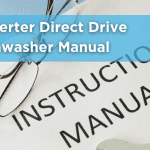Table of Contents
A garden faucet is an essential part of your outdoor setup, but over time, it can develop problems such as leaks, low water pressure, or a stuck handle. Knowing how to fix a garden faucet can save you time, money, and the hassle of hiring a plumber. In this article, we’ll cover the most common garden faucet issues and provide you with easy steps to fix them.
Why Your Garden Faucet Might Need Fixing
Before we dive into the solutions, it’s helpful to understand why garden faucets can fail. Here are some common issues you may face:
- Leaks: If water drips from the faucet or the area around it is wet, it’s usually a sign of a leaking faucet.
- Low Water Pressure: A drop in water pressure could be caused by clogged aerators or damaged valves.
- Stuck Handles: Sometimes, the faucet handle becomes difficult to turn due to mineral buildup or internal damage.
- Frozen Faucets: In colder climates, water inside the faucet can freeze, causing it to break.
Now, let’s take a closer look at how to fix these problems.
Tools You Will Need
Before you start fixing your garden faucet, gather the following tools:
- Adjustable Wrench
- Screwdriver (Phillips or Flathead)
- Pliers
- Pipe Tape (Teflon Tape)
- Replacement Parts (washer, valve, or handle)
- Bucket or Towels (to catch water)
- Plumber’s Tape (optional)
Having these tools on hand will make the repair process much smoother.
Step-by-Step Guide to Fixing a Garden Faucet
Step 1: Turn Off the Water Supply
Before you begin working on the faucet, make sure to turn off the water supply to prevent any accidents. Locate the water shutoff valve for your garden faucet, usually found near the water meter or mainline. Turn it clockwise to stop the water flow.
Step 2: Identify the Problem
The next step is to identify the problem with the faucet. Here are some common fixes:
A. Fixing a Leaking Faucet
A leaking faucet is often caused by worn-out washers or seals. Here’s how to fix it:
- Remove the Handle: Use a screwdriver to remove the screws holding the handle in place. Once removed, take the handle off.
- Replace the Washer: The washer is often the cause of leaks. Use a wrench to remove the valve stem. Inspect the washer, and if it’s worn out, replace it with a new one.
- Reassemble the Faucet: Once the washer is replaced, reassemble the faucet by reversing the steps. Tighten the valve and handle, and turn on the water supply to test for leaks.
B. Fixing Low Water Pressure
If you notice weak water flow, it could be due to a clogged aerator or valve. Here’s what to do:
- Clean the Aerator: Use pliers to remove the aerator from the faucet. Soak it in vinegar to remove any mineral deposits that may be causing blockages.
- Check the Valve: If cleaning the aerator doesn’t fix the problem, you may need to inspect the valve. Turn the valve counterclockwise to check for any debris or damage. If it’s clogged, clean it thoroughly.
- Reassemble and Test: Once the aerator and valve are clean, reassemble the faucet and test the water flow.
C. Fixing a Stuck Handle
If the faucet handle is hard to turn, it may be due to mineral buildup or internal damage. Here’s how to fix it:
- Remove the Handle: As with the other fixes, start by removing the handle using a screwdriver.
- Clean the Handle and Valve Stem: If you notice any mineral deposits or dirt, clean them with a brush and vinegar.
- Replace the Valve Stem (if necessary): If cleaning doesn’t solve the problem, consider replacing the valve stem or internal components.
Step 3: Turn on the Water Supply and Test
After fixing the problem, turn on the water supply to check the faucet. Make sure the water flow is normal, and there are no leaks. If the faucet is still malfunctioning, you may need to repeat the steps or replace the entire faucet.
Additional Tips for Maintaining Your Garden Faucet
- Regular Cleaning: Clean the faucet’s aerator and valve every few months to avoid clogs and mineral buildup.
- Check for Leaks: Regularly check for leaks to catch small problems before they become major issues.
- Protect from Freezing: In colder weather, insulate your garden faucet to prevent freezing and damage.
Conclusion
Fixing a garden faucet doesn’t have to be a difficult task. With the right tools and a little patience, you can repair common faucet problems like leaks, low water pressure, and stuck handles. By following the steps in this guide, you can keep your garden faucet working smoothly all year round.
If you’re unsure about any repair, consider calling a professional plumber for assistance. With proper care, your garden faucet will last for many seasons to come. Happy fixing!




